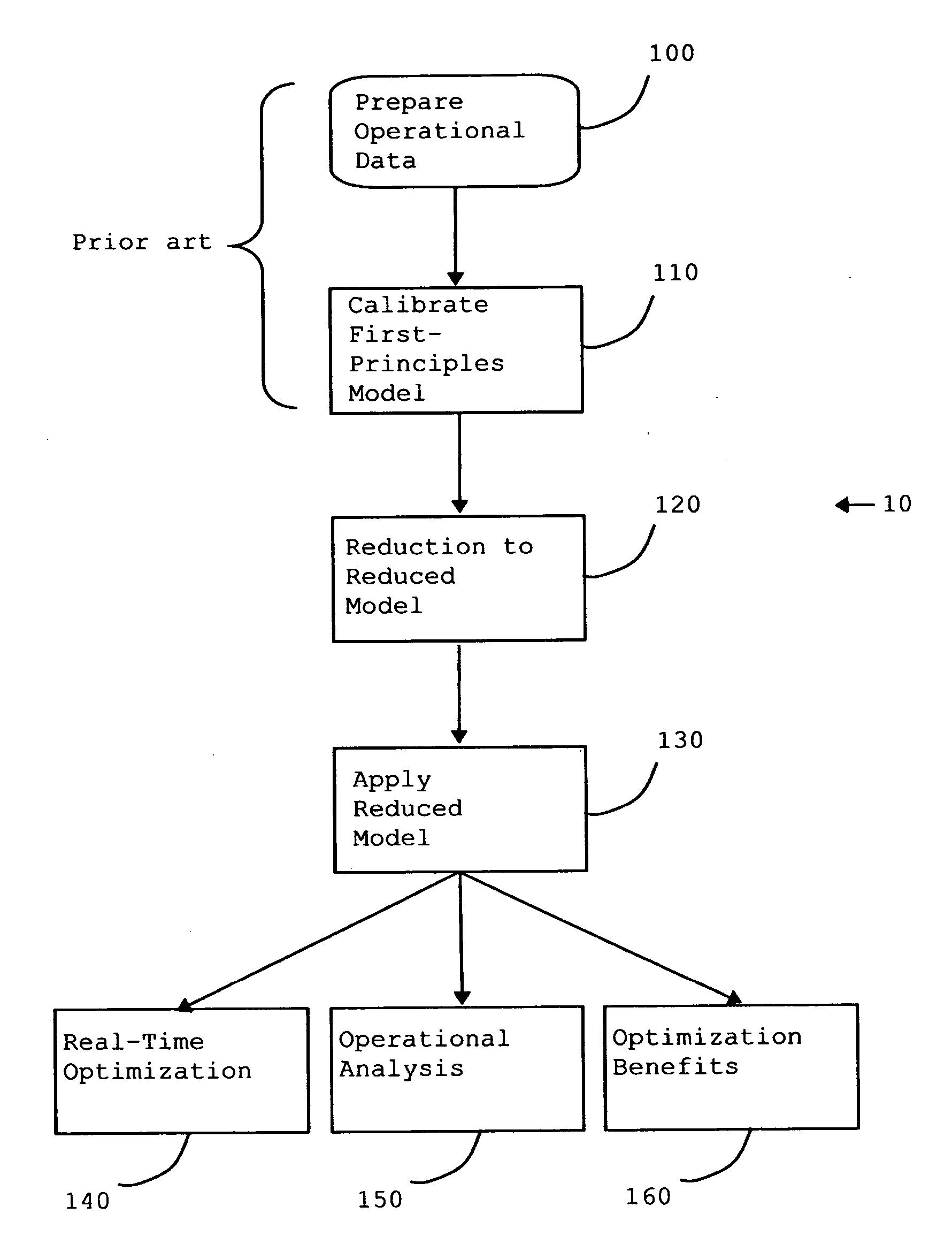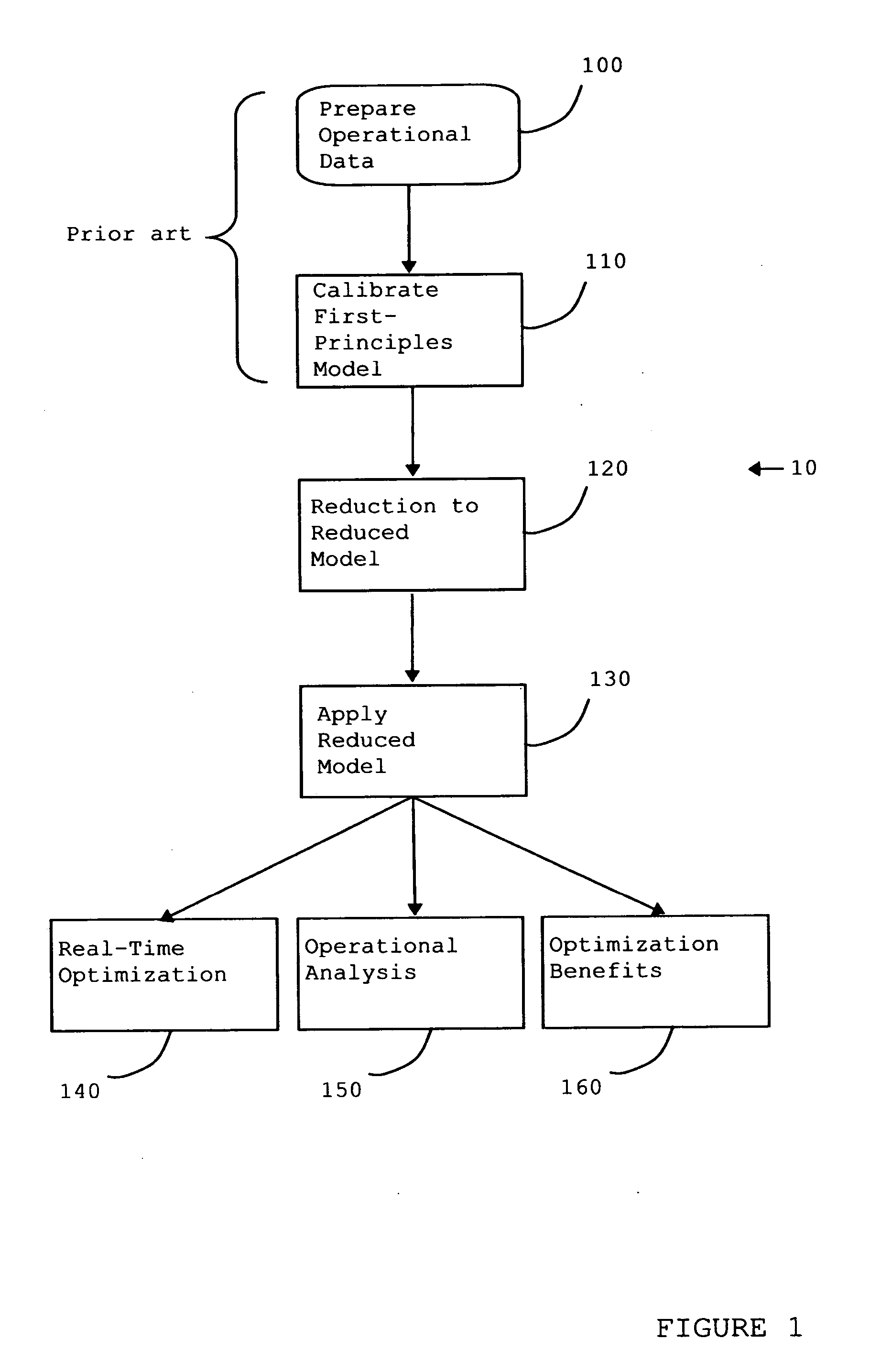Method and apparatus for applying reduced nonlinear models to optimization of an operation
- Summary
- Abstract
- Description
- Claims
- Application Information
AI Technical Summary
Benefits of technology
Problems solved by technology
Method used
Image
Examples
Embodiment Construction
[0067] It is initially noted that the present invention will be implemented preferably in software for use with any general purpose computer having a CPU, memory, an input device (keyboard) and a display device (CRT). Said computer is capable of performing the software operations described below. The invention can be viewed as a general purpose computer which is operated in accordance with programming incorporating the invention. Since computers of the type necessary to perform the operations described below are known, no further detailed description is made herein. Similarly, since software languages capable of performing the operations described below are known, no further description is necessary.
[0068] In this discussion, an example of a specific refining process, a Catalytic Cracker, will be used throughout for clarity of illustration. The use of a Catalytic Cracker in the discussion in no way limits, however, the applicability of the invention to this single illustrative exam...
PUM
 Login to View More
Login to View More Abstract
Description
Claims
Application Information
 Login to View More
Login to View More - R&D
- Intellectual Property
- Life Sciences
- Materials
- Tech Scout
- Unparalleled Data Quality
- Higher Quality Content
- 60% Fewer Hallucinations
Browse by: Latest US Patents, China's latest patents, Technical Efficacy Thesaurus, Application Domain, Technology Topic, Popular Technical Reports.
© 2025 PatSnap. All rights reserved.Legal|Privacy policy|Modern Slavery Act Transparency Statement|Sitemap|About US| Contact US: help@patsnap.com



